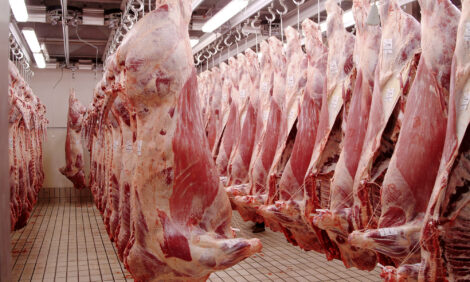



US Antibiotic Use Rises 2009 to 2012
US - The total quantity of medically important antimicrobials sold or distributed for use in food-producing animals increased by 16 per cent over the period 2009-2012, according to the US Food and Drug Administration's fourth annual report summarising the sales and distribution data of these drugs.Additional data tables have been added to this latest 2012 report to provide more detailed information and to improve transparency, and the same tables have also been added to the summary reports for the previous years (2009-2011).
Section 105 of the Animal Drug User Fee Amendments of 2008 (ADUFA 105) requires antimicrobial drug sponsors to report to FDA on an annual basis the amount of antimicrobial drugs they sell or distribute for use in food-producing animals. ADUFA 105 also requires the FDA to prepare summary reports of sales and distribution information received from drug sponsors each year, by antimicrobial class for classes with three or more distinct sponsors, and to provide those summaries to the public.
Trends from 2009 through 2012 reflected in this year’s summary report include:
- The total quantity of medically important antimicrobials sold or distributed for use in food-producing animals increased by 16 per cent over the period 2009-2012. The reason for the increase is unclear but many factors (such as disease outbreaks and fluctuations in animal populations) could lead to transient increases or decreases of sales of certain drugs in given years.
- The percentage of domestic sales and distribution of medically important antimicrobials that are approved for production use decreased from 72 per cent to 68 per cent. This number does not represent sales and distribution of drugs solely used for production because most of these products are approved for therapeutic (disease treatment, control or prevention) uses as well.
- The percentage of domestic sales and distribution of medically important antimicrobials approved for use in food-producing animals that are sold over-the-counter (OTC) did not change appreciably, decreasing from 98 per cent to 97 per cent.
In December 2013, the FDA published Guidance #213, which calls for animal drug sponsors of medically important antimicrobials to remove from their product labels indications for use related to growth promotion, and bring the remaining therapeutic uses of these products under the oversight of a veterinarian by December 2016.
Once these changes are made, it will become illegal to use these products for production purposes or for therapeutic purposes without veterinary oversight. As announced in June 2014, all 26 drug sponsors affected by Guidance #213 have agreed to fully engage in the FDA’s strategy.
Commenting on the report, the Animal Health Institute (AHI) said: "Today’s antibiotic sales data report from the FDA is a small part of the story about the public health impact of antibiotics used to keep food animals healthy.
"National sales information is limited in its use and does not necessarily correlate to national resistance trends. Several recent reports help complete the picture of the impact of agricultural use of antibiotics:
- A December 2013 report on antibiotic resistance threats from the Center for Disease Control which listed 18 specific pathogenic threats with only two of those 18 having potential sources in agriculture.
- The recent report from the President’s Council of Advisors on Science and Technology (PCAST) also places agricultural use in the broader context of human health being the largest contributor and praised the FDA’s new judicious use policy.
- Data released by the FDA’s National Antimicrobial Resistance Monitoring System (NARMS) in August showed 85 percent of non-typhoidal Salmonella collected from humans had no resistance to any of the antibiotics tested. Over the life of the NARMS program this measurement of resistance in people has steadily declined.
- A recent review by researchers at Harvard notes “from the proportion of antibiotics by weight used in agriculture as opposed to human medicine it does not follow that the majority of selective pressure on human pathogens, let alone the majority of human health impact of antibiotic resistance, results from agricultural uses.”
AHI President and CEO, Alexander S. Mathews, said: “Animal health companies are committed to continuous improvement of judicious use. That is reflected in our work with FDA to implement the agency’s judicious use policy. When fully implemented, medically important antibiotics will be used in food animals only to fight disease under the supervision of a veterinarian.”
TheCattleSite News Desk


